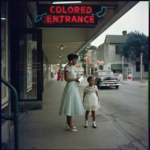Blogpieces for Beloved, Jazz and Paradise
Entering into the emotional dramas and ancestral landscapes of Toni Morrison's novels can be daunting but also exhilarating, and sometimes sobering. Vivid passages can lead us to discover new ways of being in the world as sheer, concrete descriptions rock us
Although she has claim, she is not claimed.In the place where long grass opens, the girl who waited to be loved and cry shame erupts into her separate parts, to make it easy for the chewing laughter to swallow her all away.
This is Morrison's descriptive metaphor for how the character called Beloved disappeared from the house on 124 Bluestone Road.
What do you feel about this young woman after reading this?

You see, I want to know what you think. I want us to be able to share our responses to not only specific image-scenes, as in the above example, but to the emotional arcs of all of the characters; to the landscapes and ancestral territories, to the esthetic experiences of readers encountering dramatic arrangements of the parts of the story, the juxtapositions and oppositions.

Joy Deb /Pexels
That's why I've created what I call "blog-pieces": "blog" to retain the character of a short writing--with images, video links, musical links, and the like--and "pieces" to evoke what are essentially informal, reflective non-fiction pages that speak directly to the reader.
Blogpieces are Organized into 3 Sections:
FOUNDATIONS: Root Blogs, Reader's Participation & Emotional Story Structures
THE HEART OF THE MATTER: Time & Memory, Claiming Geographic Space, Music & Intermediality
LARGER CONTEXTS: More on Aesthetics, Morrison's Intertextuality, & Race and Response-ability
9 BLOGPIECE "CLUSTERS": One way of going through these is to from the upper left to the lower right. But you can browse as you wish! Happy Reading and Responding!
ALTERNATIVE: A Chronological unfolding of the blogs--to see each blog in sequence
A mineral scent was in the air; sweeping down from some Genesis time when volcanoes stirred and lava cooled quickly under relentless wind.Wind that scoured cold stone, then sculpted it and, finally, crumbled it to the bits rock hounds loved.The same wind that once lifted streams of Cheyenne/Arapaho hair also parted clumps of it from…
Read MoreLate in Paradise, some of the Convent women who had been shot by the patriarchs from the all-black town of Ruby miraculously reappear. Take Pallas Truelove, for example: carrying a sword along with her newborn, Pallas walks through a wall into her mother’s home. She picks up some huaraches there and then walks out through another…
Read More“Ain’t nobody prayin’ for me. Ain’t nobody prayin.’” —Kendrick Lamar, lyrics from “Feel” (2017 Damn album) Late in Beloved, we readers find ourselves inside of a slave ship through the first-person narration of a young African girl. She is crammed together with hundreds of other captives headed across the Atlantic to be sold as slaves; many…
Read More“Black geographies allow us to consider alternative ways of imagining the world.” –Katherine McKittrick & Clyde Woods, Black Geographies and the Politics of Place Consider the historical “Underground Railroad”: that vast network of people and places in the United States that aided runaway slaves on their…
Read More“Imagine diffracted times coming together, without this imperial linear conception of time that Columbus brought with him” –Edouard Glissant Postcolonial artists in the Caribbean and United States create spatio-temporal fluidities–found in music, literature, dance, sculpture and performance arts–where the past reanimates the present and different geographies seem to merge. Many of these 20th-21st century artists are…
Read MoreTomorrow we shall have to think up signs, sketch a landscape, fabricate a plan on the double page of day and paper. tomorrow, we shall have to invent, once more, the reality of this world. — Octavio Paz, “January First” —trans. by Elizabeth Bishop My title for this Reflections Q&A is a gloss…
Read MoreBaby Suggs, the matriarch in Beloved, did not fully realize what freedom from slavery meant until she had crossed the Ohio River into Cincinnati, when she discovered that her body now belonged to her: “These hands belong to me. These my hands” (166) Not to have legal ownership of one’s embodied self was a fundamental…
Read MorePerhaps the most helpful passage from Morrison herself in describing how her readers will participate in her works is in her interview with Claudia Tate: The read supplies even some of the color, some of the sound. My language has to have holes and spaces so the reader can come into it. He or she can feel…
Read More“Winging one’s way through the vise and expulsion of history becomes possible in creative encounters with that history.” —Toni Morrison The folklore of the flying Africans is a creative response to exile and captivity. “The people could fly. They flew like blackbirds up above with their wings shining against the blue sky,” the story…
Read MoreWhy can rhetoric help Toni Morrison’s readers? Because it gives us anchors in a sea of our individually varied reading responses. “The rhetorical situation” is a set of such anchors, and they are not difficult to absorb, I promise! Rhetorical Model Classically described as sender/message/receiver) between the author, text, and reader is a structure…
Read More

















